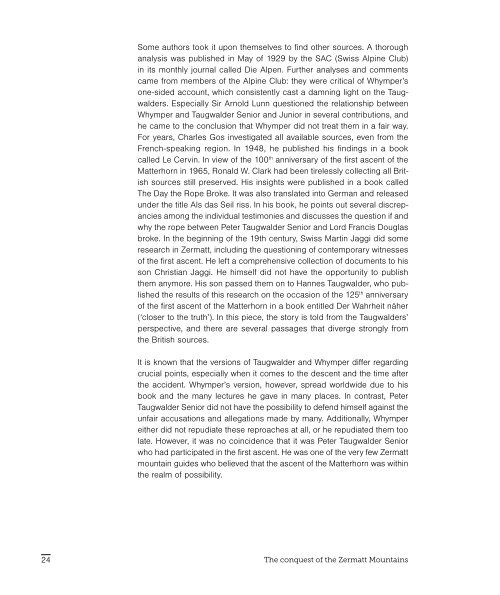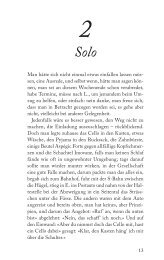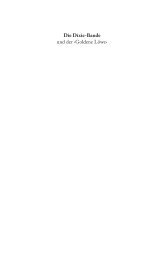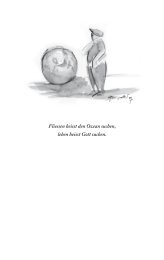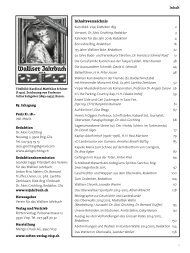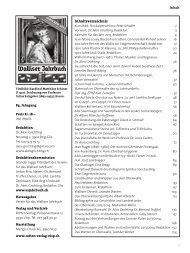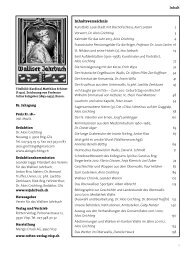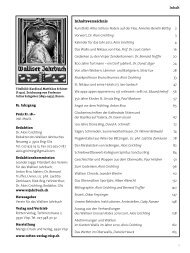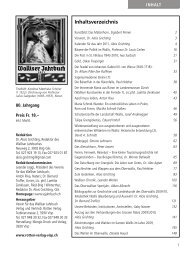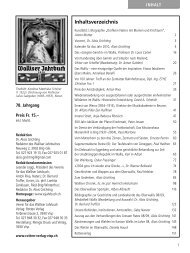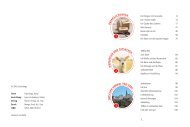Biner_Leseprobe
You also want an ePaper? Increase the reach of your titles
YUMPU automatically turns print PDFs into web optimized ePapers that Google loves.
Some authors took it upon themselves to find other sources. A thorough<br />
analysis was published in May of 1929 by the SAC (Swiss Alpine Club)<br />
in its monthly journal called Die Alpen. Further analyses and comments<br />
came from members of the Alpine Club: they were critical of Whymper’s<br />
one-sided account, which consistently cast a damning light on the Taugwalders.<br />
Especially Sir Arnold Lunn questioned the relationship between<br />
Whymper and Taugwalder Senior and Junior in several contributions, and<br />
he came to the conclusion that Whymper did not treat them in a fair way.<br />
For years, Charles Gos investigated all available sources, even from the<br />
French-speaking region. In 1948, he published his findings in a book<br />
called Le Cervin. In view of the 100 th anniversary of the first ascent of the<br />
Matterhorn in 1965, Ronald W. Clark had been tirelessly collecting all British<br />
sources still preserved. His insights were published in a book called<br />
The Day the Rope Broke. It was also translated into German and released<br />
under the title Als das Seil riss. In his book, he points out several discrepancies<br />
among the individual testimonies and discusses the question if and<br />
why the rope between Peter Taugwalder Senior and Lord Francis Douglas<br />
broke. In the beginning of the 19th century, Swiss Martin Jaggi did some<br />
research in Zermatt, including the questioning of contemporary witnesses<br />
of the first ascent. He left a comprehensive collection of documents to his<br />
son Christian Jaggi. He himself did not have the opportunity to publish<br />
them anymore. His son passed them on to Hannes Taugwalder, who published<br />
the results of this research on the occasion of the 125 th anniversary<br />
of the first ascent of the Matterhorn in a book entitled Der Wahrheit näher<br />
(‘closer to the truth’). In this piece, the story is told from the Taugwalders’<br />
perspective, and there are several passages that diverge strongly from<br />
the British sources.<br />
It is known that the versions of Taugwalder and Whymper differ regarding<br />
crucial points, especially when it comes to the descent and the time after<br />
the accident. Whymper’s version, however, spread worldwide due to his<br />
book and the many lectures he gave in many places. In contrast, Peter<br />
Taugwalder Senior did not have the possibility to defend himself against the<br />
unfair accusations and allegations made by many. Additionally, Whymper<br />
either did not repudiate these reproaches at all, or he repudiated them too<br />
late. However, it was no coincidence that it was Peter Taugwalder Senior<br />
who had participated in the first ascent. He was one of the very few Zermatt<br />
mountain guides who believed that the ascent of the Matterhorn was within<br />
the realm of possibility.<br />
24 The conquest of the Zermatt Mountains


